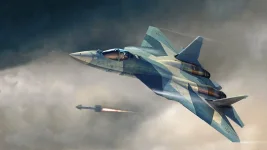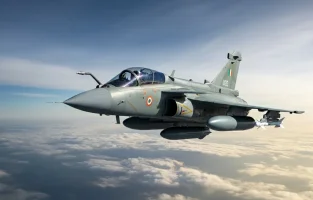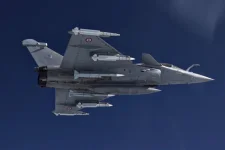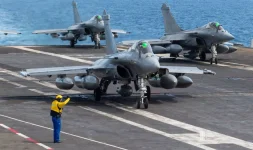- Views: 7K
- Replies: 40
India's ambition to further integrate its domestically developed weaponry onto its fleet of French-made Rafale fighter jets has encountered a significant hurdle.
According to sources, Dassault Aviation, the manufacturer of the Rafale, is reportedly hesitant to grant India access to the aircraft's critical source code, a key component for seamless weapon integration.
While Dassault has agreed to support the fitting of Indian armaments on both the Indian Navy's Rafale M and the Indian Air Force's Rafale F3R versions, the reluctance to share the source code has sparked a broader discussion.
This debate touches upon crucial issues of national technological independence, intellectual property rights, and a nation's capacity for independent strategic decision-making in an evolving global landscape.
The source code in contention is essential for the operation of the Rafale’s advanced Thales RBE2 Active Electronically Scanned Array (AESA) radar and its Modular Mission Computer (MMC). These systems form the electronic core of the aircraft, managing sensor data fusion, weapons systems, and other mission-critical functions.
Access to this code is vital for India to effectively integrate its own weapons, such as the DRDO-developed Astra beyond-visual-range air-to-air missile (BVRAAM), the Rudram series of anti-radiation missiles, and other indigenous avionics.
Without this access, India's ability to customize the Rafale for its specific operational needs and challenging regional environment remains constrained, potentially hindering its "Atmanirbhar Bharat" (self-reliant India) initiative in the crucial defence sector.
Dassault Aviation's reservations are understood to be linked to concerns about potential competition for French-made weapons, particularly those manufactured by the European missile consortium MBDA.
The Rafale is typically equipped with MBDA’s MICA air-to-air missile. However, India’s Astra missile, with its existing Mk1 version offering a range of 110 km and the upcoming Mk2 expected to exceed 160 km, is considered a potent and more cost-effective alternative.
Reports suggest that other Rafale operators, including Greece, have expressed interest in the Astra, prompting concerns within Dassault and MBDA that sharing the source code could accelerate a shift towards non-French weapon systems.
This standoff highlights an inherent tension between a nation's pursuit of technological self-sufficiency and the commercial interests tied to intellectual property.
For India, gaining access to the source code is viewed as a matter of strategic autonomy. It would enable the Indian Air Force, which operates 36 Rafales, and the Indian Navy, which is set to acquire 26 Rafale M (naval) variants for its aircraft carriers with deliveries expected from 2026-2027, to reduce reliance on foreign suppliers.
Furthermore, it would allow tailoring the aircraft to India’s unique operational requirements, particularly in light of regional security dynamics involving China and Pakistan. Integrating indigenous weapons like the Astra and Rudram would also lower life-cycle costs and enhance interoperability with other Indian platforms like the Tejas Light Combat Aircraft and Su-30 MKI, which already utilize these systems.
It is reported that both MBDA and Dassault are wary of this trend. India's successful integration of indigenous weapons could serve as a precedent for other nations operating the Rafale, such as Egypt, Qatar, and the UAE, who might also explore cost-effective indigenous or third-party alternatives to French missiles.
This situation is further complicated by India’s growing aspirations as a defence exporter, with the Astra missile being offered to friendly foreign countries as part of the "Make in India" initiative.
While Dassault's current willingness to assist with the physical integration of Indian weapons is seen as a positive step, the core issue of source code access remains unresolved. India may need to explore alternative technical solutions, such as developing middleware or interface systems that could allow integration without direct source code access, though such workarounds could be complex and less optimal.
Another potential avenue could involve negotiating a limited license for the source code, with stringent safeguards to protect Dassault's intellectual property. The resolution of this matter will be closely watched as it holds significant implications for India's defence modernization and self-reliance goals.




